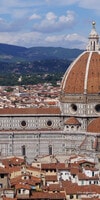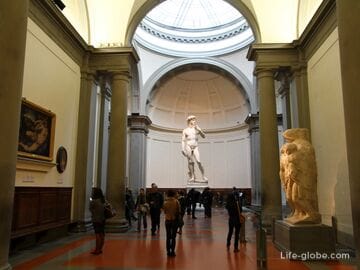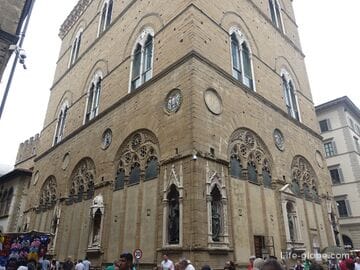The Santa Maria del Fiore complex or the Duomo complex is the most famous and visited museum complex in Florence, the objects of which make up a single magnificent ensemble.
The Duomo complex includes:
- Cathedral of Santa Maria del Fiore (Santa Maria del Fiore);
- crypt - the underground remains of the former Cathedral of Santa Reparata (Cripta Santa Reparata), located under the cathedral;
- the dome of the cathedral with an observation deck, called "Cupola del Brunelleschi" (Cupola del Brunelleschi);
- terraces of the cathedral, which offer views of both the cathedral itself and Florence;
- Giotto's detached bell tower (Giotto's Campanile, Campanile di Giotto) with viewing platforms;
- Baptistery of San Giovanni or Baptistery of St. John (Battistero di San Giovanni), which has the status of a minor basilica;
- The Museum of the Opera Duomo (Museo dell'Opera del Duomo), which is a museum complex of the Cathedral of Florence.
The Santa Maria del Fiore complex is not only a valuable monument of architecture and history, covering the heart of the historical center of the city, but also the main attraction of Florence, which impresses with its monumental size, as well as the view of a single whole created through the use of the same materials in the decoration of objects.
The cathedral, bell tower and baptistery are part of the UNESCO World Heritage Site.
All the objects of the complex are located next to each other, within walking distance, on the Duomo Square (Cathedral Square, Piazza del Duomo) and the neighboring St. John's Square (Piazza San Giovanni).
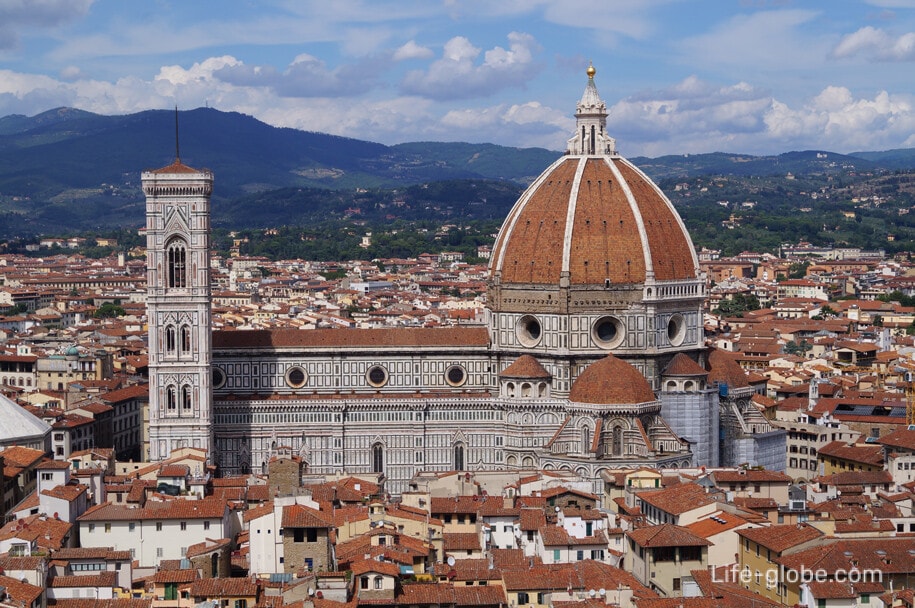
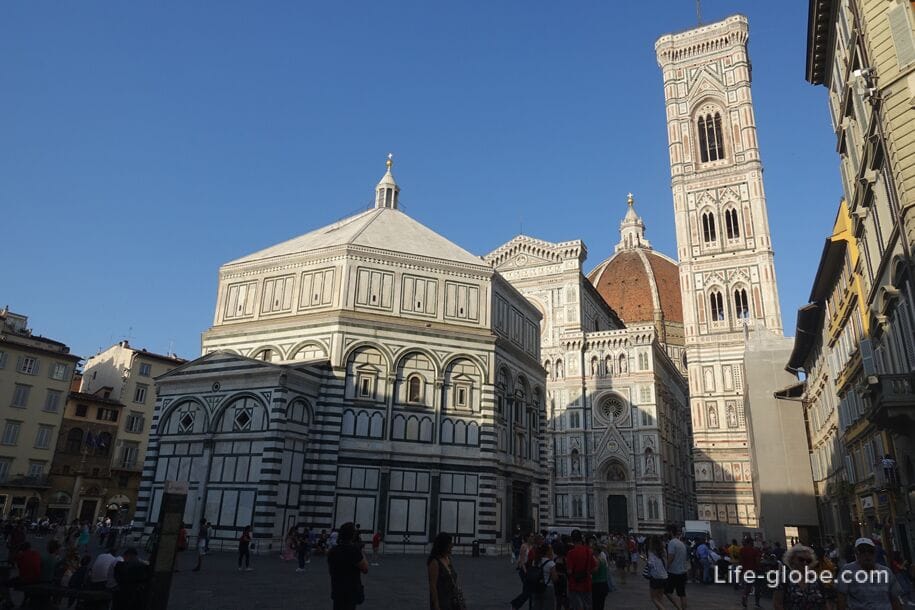
Visit to the Duomo complex
Entrance to the Cathedral of Santa Maria Del Fiore is free.
A visit to the crypt of Santa Reparata under the cathedral, a climb to the Brunelleschi dome, a visit to the Baptistery of San Giovanni, the Duomo Museum and the Giotto Bell tower - paid, by ticket. Visits to these cathedral sites are included in the single ticket of the Duomo complex. The ticket is valid for 3 days. There are various combinations of tickets, which include all or part of the facilities of the complex.
To climb the dome, it is necessary to choose in advance (when buying a ticket) the time by which you will have to approach the entrance to climb the dome. All other paid facilities of the complex can be visited at any time of the ticket validity. In the high tourist season, if you want to buy a ticket with a visit to the dome, it is better to worry about tickets in advance. For example, you can purchase tickets at the ticket office on the day of arrival with the time of ascent to the dome on any day and time convenient for you, if any are available. Or buy tickets on the official website, but when buying on the website, as a rule, a fee is charged, which you will not have to pay at the box office. We recommend specifying this information in advance.
Visiting the terraces of the cathedral is possible accompanied by a cathedral guide with excursions, which must be booked in advance on the website.
We recommend you to check the exact and detailed information about tickets and their cost, the opening hours of the facilities of the complex, the available free time for recording the ascent to the dome, excursions along the terraces of the cathedral, etc., on the official website of the Duomo complex: duomo.firenze.it.
Tickets can be purchased online or at the ticket offices (information centers) located directly in the Opera Duomo Museum or on Duomo Square, in a building located on the south side of the cathedral.
Photo of the Opera Duomo Museum building
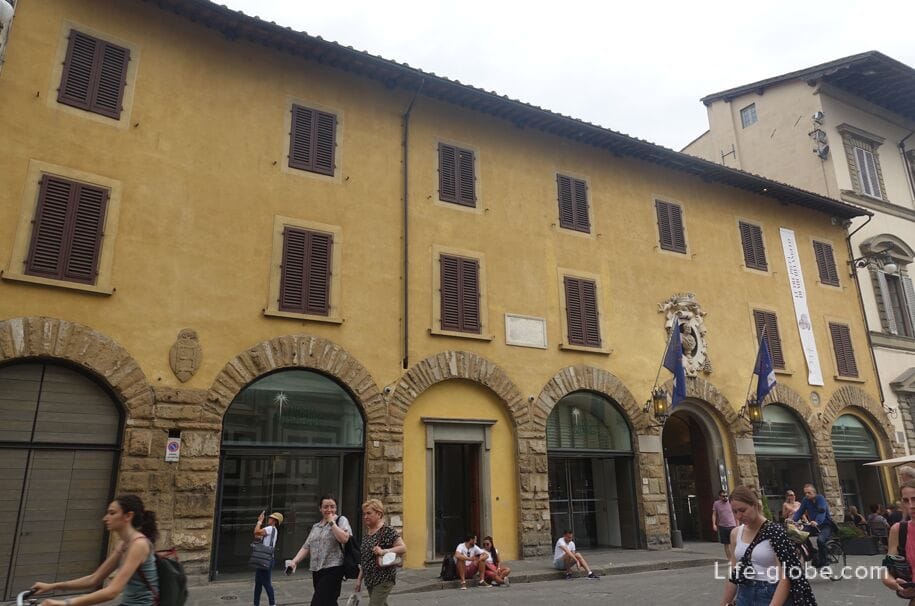
Photo of ticket offices on the south side of the cathedral
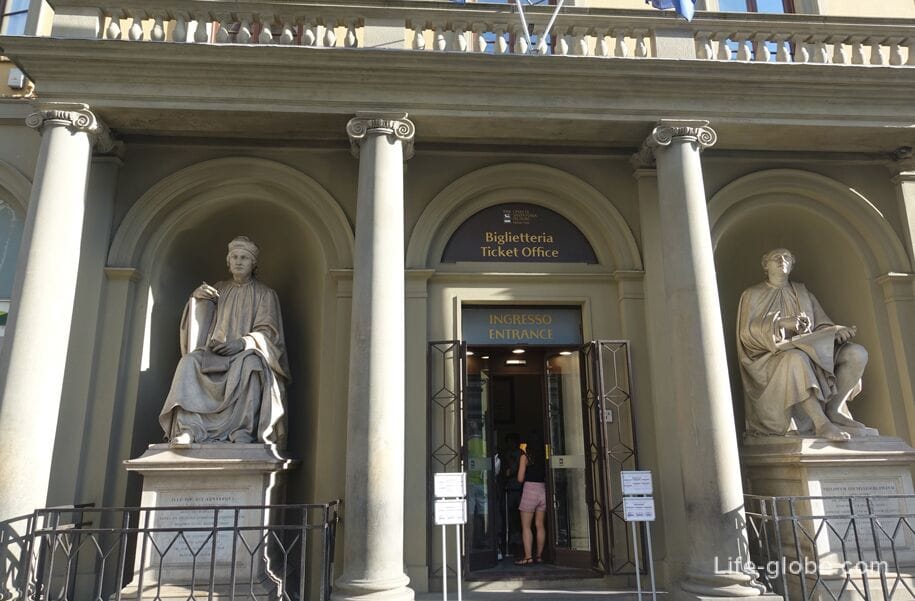
Objects of the Duomo complex
Cathedral of Santa Maria Del Fiore
Florence Cathedral, whose full name is Santa Maria del Fiore (La Cattedrale di Santa Maria del Fiore, translated as St. Mary's Cathedral with a flower) is the main (cathedral) cathedral of Florence (Duomo of Florence), which is a symbol of the city and a magnificent example of Florentine architecture Quattrocento.
The history of the cathedral dates back to the end of the 13th century, when it was erected over the remains of the earlier church of Santa Reparata.
The cathedral was consecrated in honor of the Holy Virgin Mary with a lily flower in her hand. The iris flower, or Heraldic lily, is a symbol of the Immaculate Virgin, an attribute of the Annunciation, the official symbol and coat of arms of Florence.
The cathedral impresses with its grandeur and beauty, thanks to the luxurious cladding of the facades of the walls on all sides of the cathedral, made of multicolored marble panels of geometric pattern in various shades: white marble (from Carrara) green (from Prato) and pink (from Maremma) - this is the so-called inlay style typical of the architecture of medieval and Renaissance Tuscany. Also, the exterior of the cathedral has sculptural and architectural decorations.
The interior of the cathedral, on the contrary, is quite strict and modest, but creates the impression of an infinite space and has some architectural masterpieces. More about Santa Maria del Fiore Cathedral...
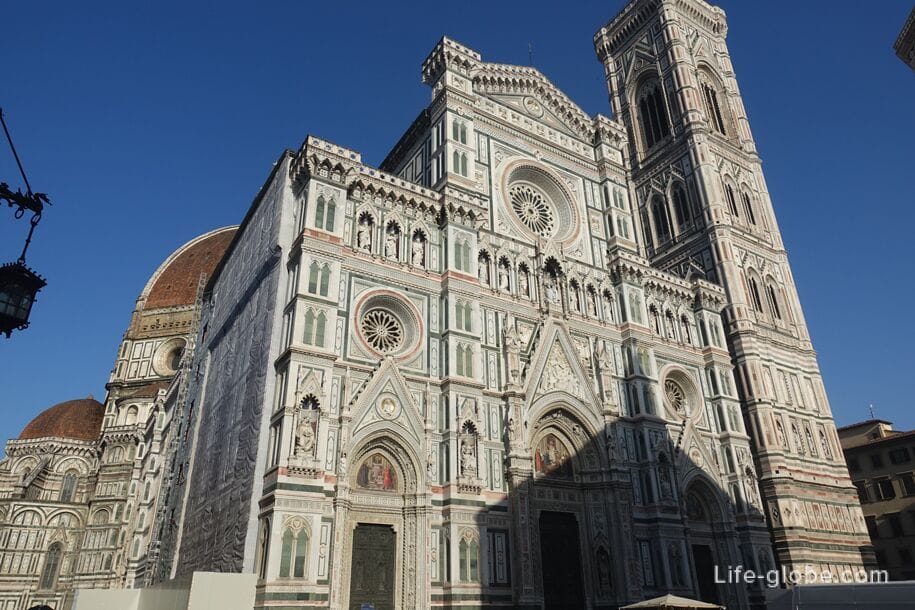
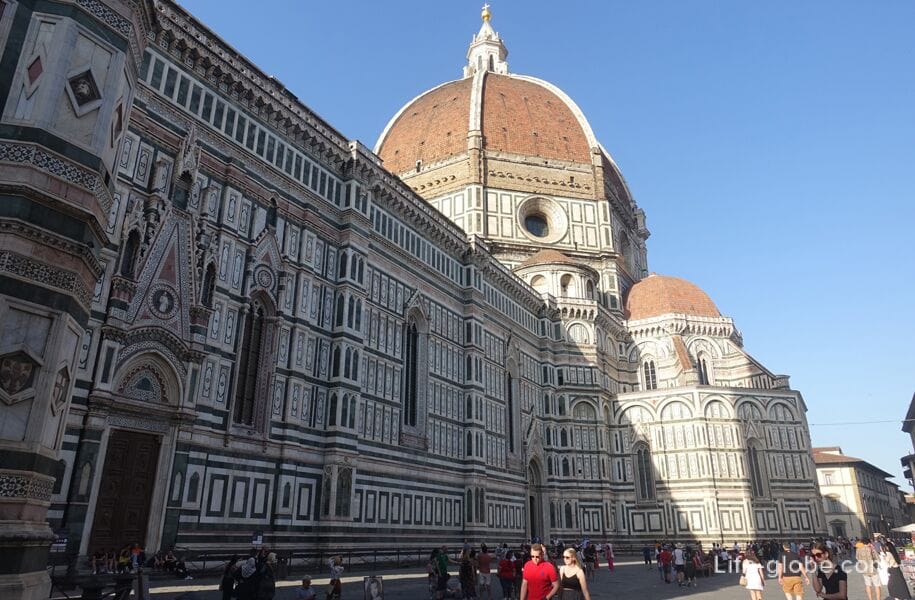
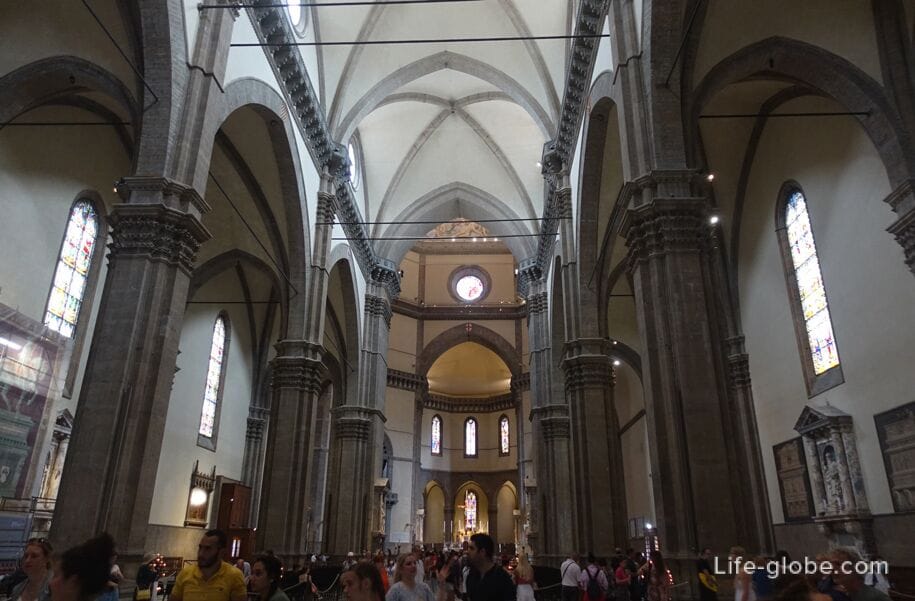
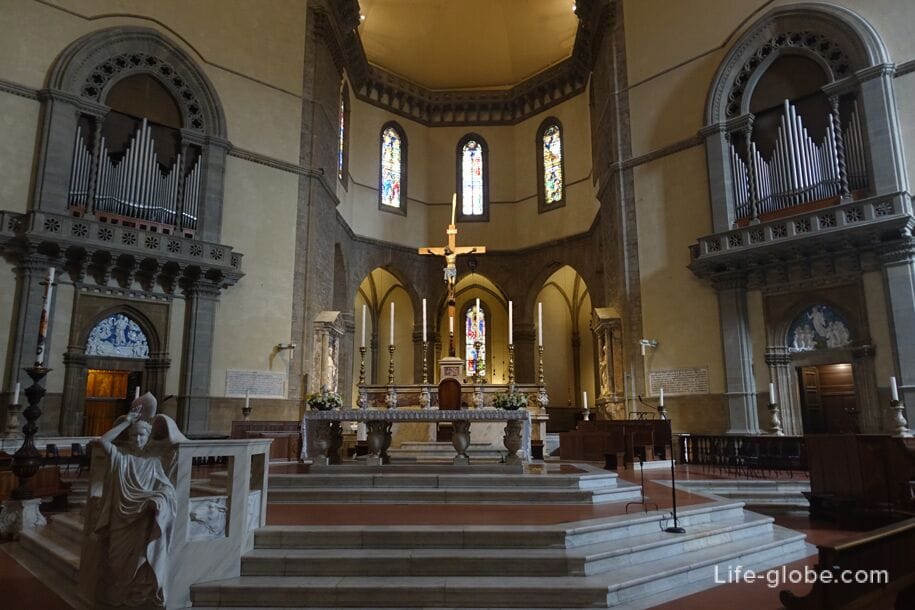
Crypt under the cathedral (Santa Reparata)
Under the Cathedral of Santa Maria del Fiore is the so-called crypt of Santa Reparata (Cripta Santa Reparata) - a former church, from which the remains of the former Cathedral of Florence are now left, over which the current Cathedral of Florence was erected.
The remains of an ancient early Christian basilica were discovered between 1965 and 1973 during excavations under the Cathedral of Santa Maria del Fiore. These remains of the ancient Basilica of Santa Reparata are the largest and most reliable evidence of early Christianity in Florence.
Here you can see the remains of walls and mosaic floors, as well as tombstones, parts of frescoes and several showcases with exhibits.
The entrance to the crypt is located inside the current cathedral (on the south side). Steps lead to the crypt. More about Santa Reparata Crypt…
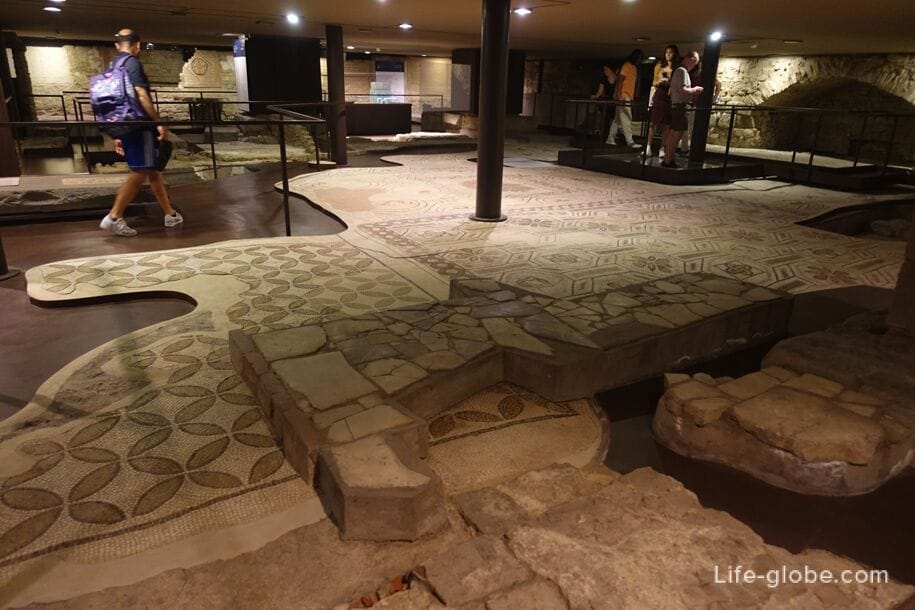
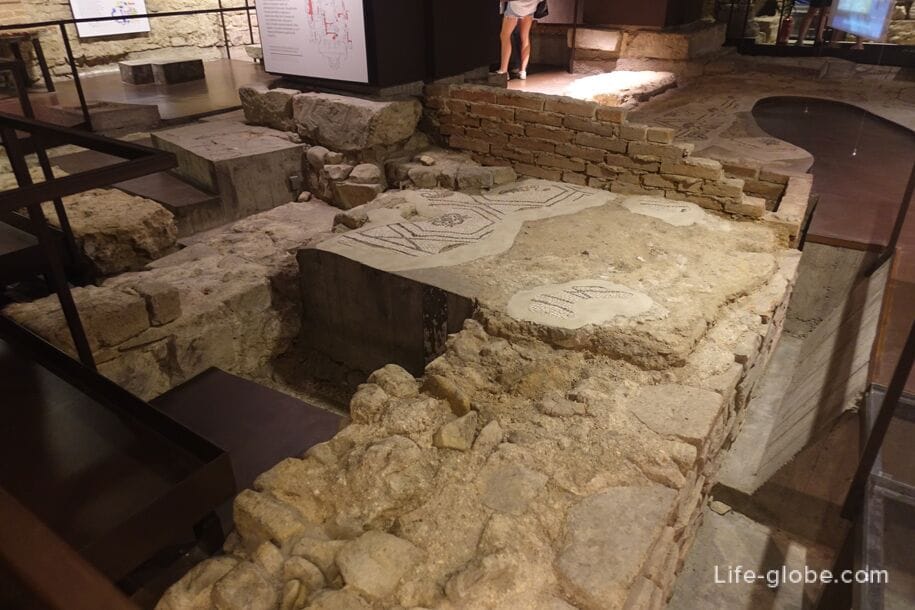
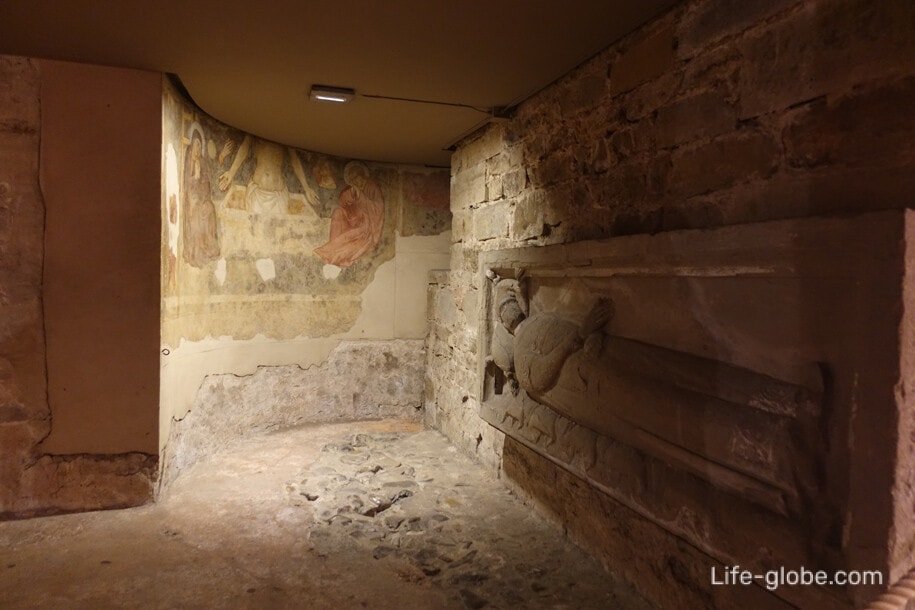
The dome of the cathedral
The Brunelleschi dome (Cupola del Brunelleschi) is an integral part of the cathedral.
The dome got its name from Filippo Brunelleschi, according to whose plans it was erected in 1420-1436.
The dome has a diameter of 45.5 meters and a total height of more than 116 meters, which makes it the largest stone vault in the world.
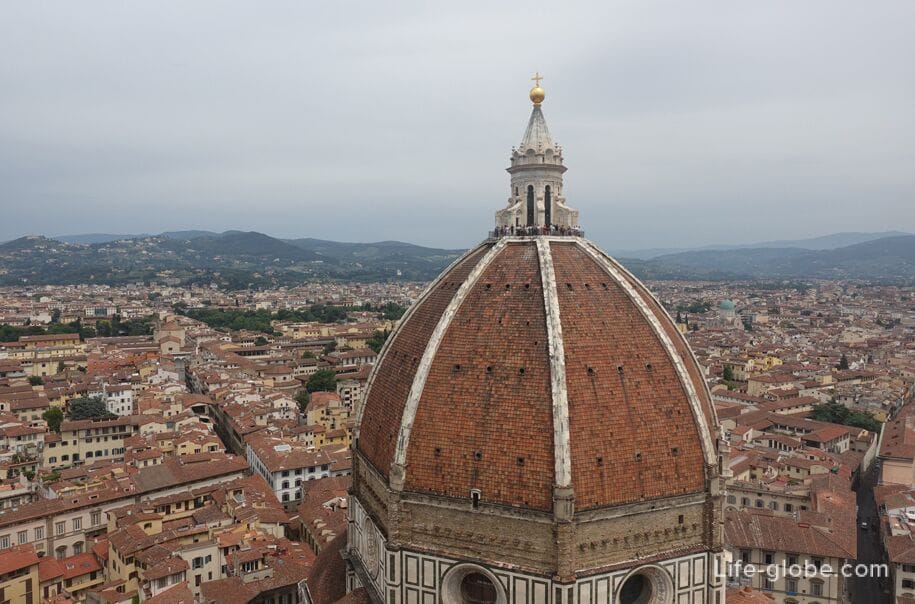
The magnificent huge dome of the cathedral is painted from the inside with frescoes in 1572-1579 by Giorgio Vasari and Federico Zuccari on the theme of the Last Judgment.
Inside the dome there are two rows of galleries, one of which you can walk through and admire the dome up close, when climbing to the observation deck of the dome. Also, the murals on the inside of the dome are visible from the cathedral itself.
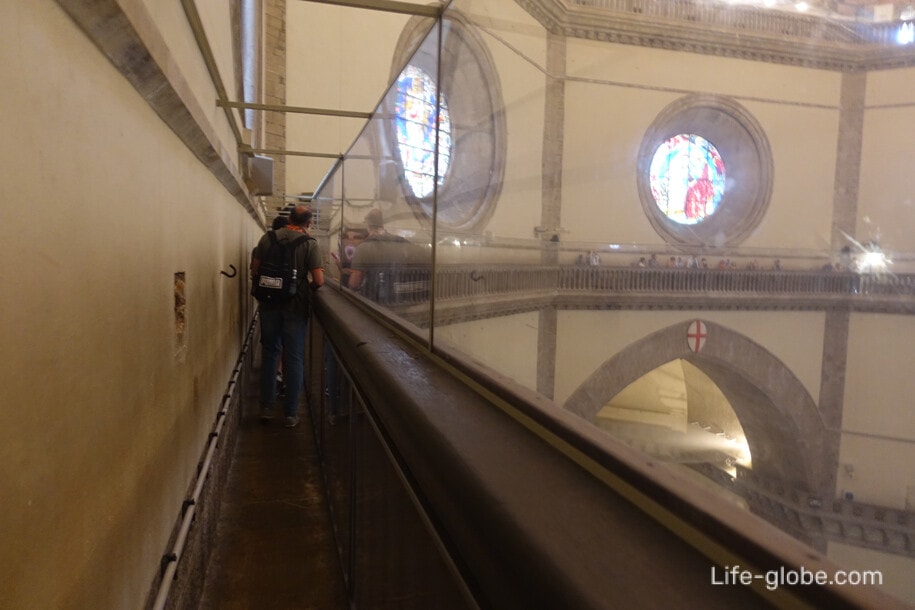
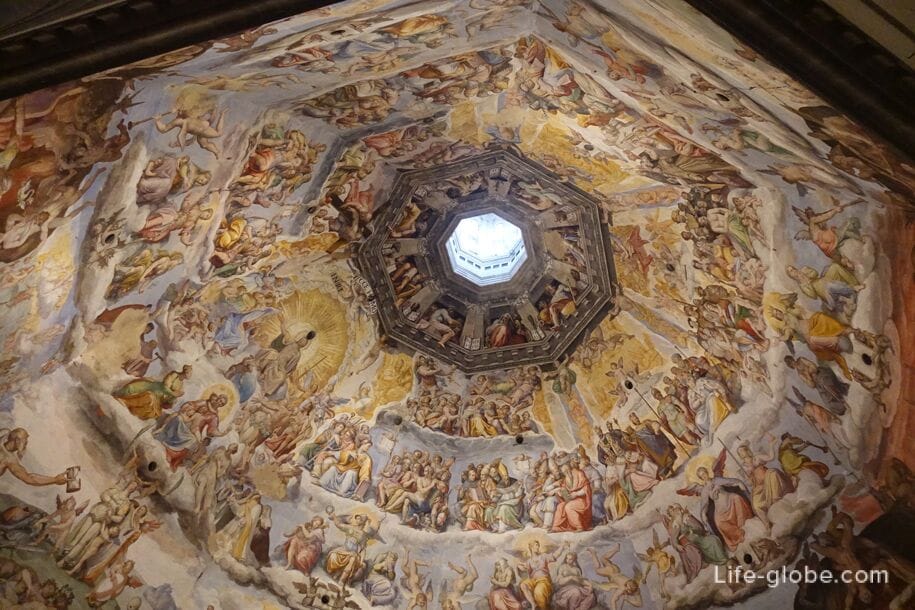
Climbing the dome, you can go to the open 360-degree observation deck, which offers stunning views of the whole of Florence and even beyond the city.
The observation deck is located at an altitude of 92 meters.


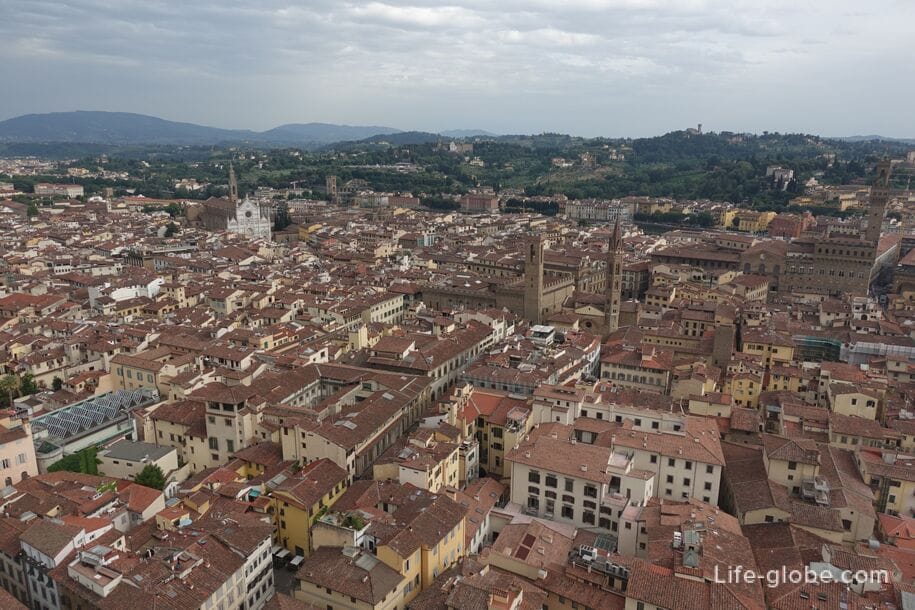
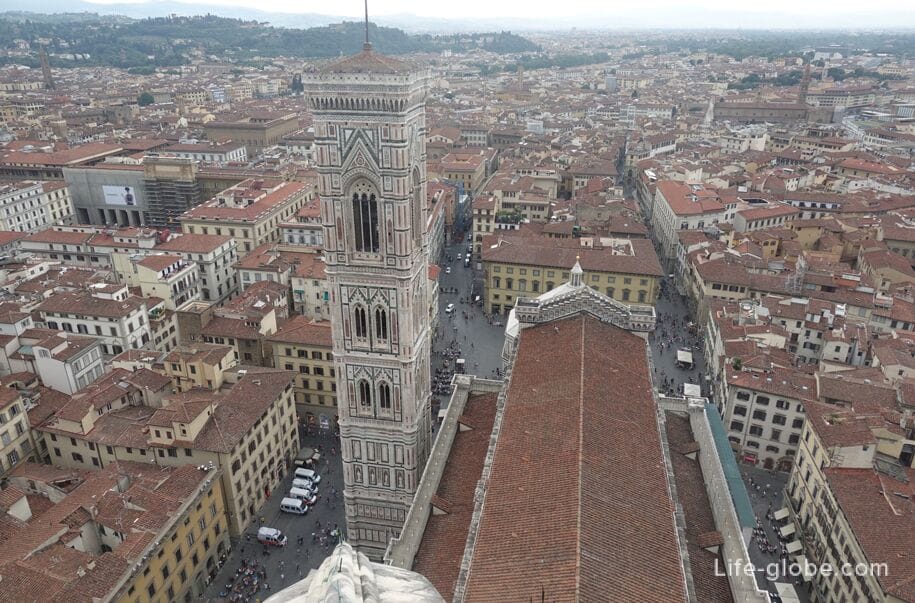
The entrance to the ascent to the dome is located on the north side of the cathedral, from the Porta della Mandorla (Porta della Mandorla) from the Duomo Square (Piazza del Duomo).
A total of 463 feet lead to the dome (there is no elevator).
The ascent under the dome is carried out by a spiral staircase. When climbing, you can see a small exposure. Learn more about the dome, observation deck, views and ascent…
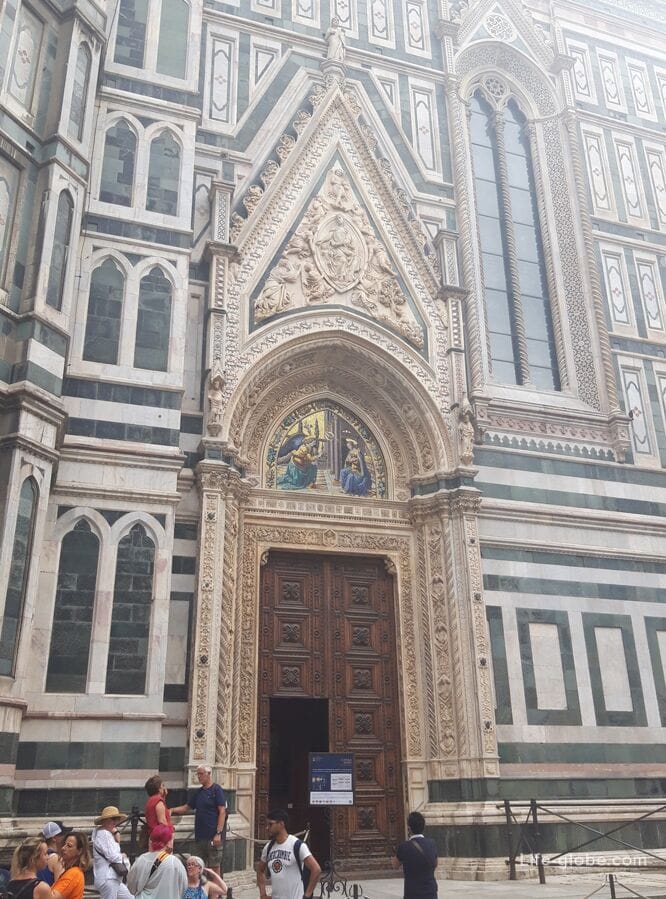
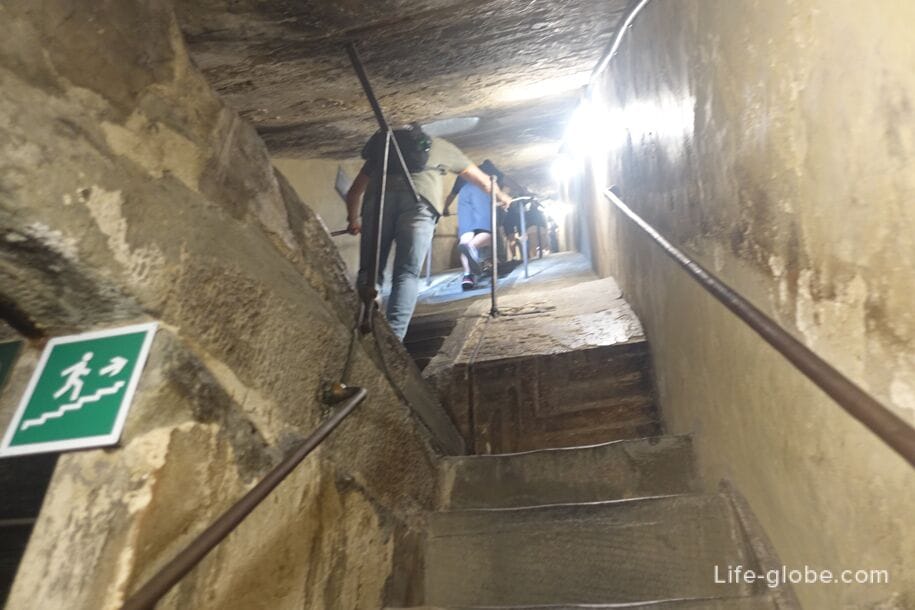
Cathedral terraces
At the height of the roofs of the side aisles of the cathedral (32 meters), from the outside of the cathedral there are terraces where you can climb and admire the views of Florence.
The terraces consist of a solid balcony on consoles, decorated on the outside with a marble balustrade perforated with quadriboles.
Along the northern and southern terraces, currently accessible and about 70 meters long each, you can see the marble details of the rosette windows and the covering of the main nave, where you can see the presence of holes for pontoons, and the brick roofs of the naves, under which the attic rooms of the cathedral are hidden.
At the end of the route you can see the "blind" tribunes of the cathedral, which in 1439, in order to strengthen the stability of the dome of the cathedral, Brunelleschi designed.

Bell Giotto
Next to the cathedral is the detached Giotto Bell tower (Giotto's Campanile, Campanile di Giotto), which is an outstanding example of Florentine Gothic architecture with rich sculptural decorations and polychrome marble inlays.
The bell tower received the name "Giotto" from its designer and creator of its first tier - the Italian architect and painter Giotto di Bondone.
The construction of the bell tower was started in 1334 and completed in 1359.
The bell tower is 84.7 meters high and about 15 meters wide.

The bell tower can be climbed; there is a 360-degree observation deck, which offers beautiful views of the whole of Florence and even beyond the city.
The ascent to the observation terrace of the bell tower is carried out by stairs (there is no elevator), with a total of 414 steps.
During the ascent, guests are accompanied by three viewing platforms and the last one, located at the very top - the terrace of the bell tower (height 82 meters). The higher you climb, the more picturesque the views are. More about Giotto's Campanile, viewing, views and ascent…
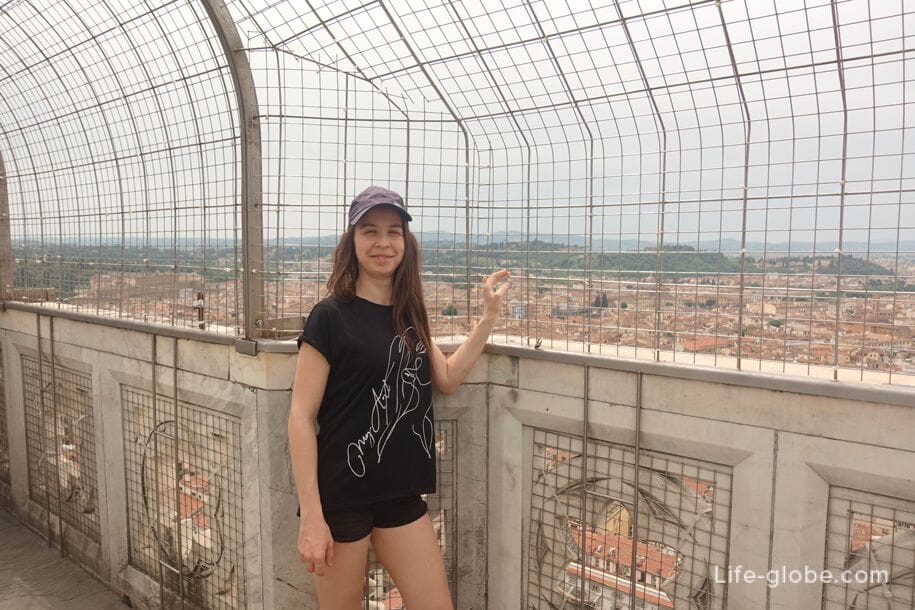
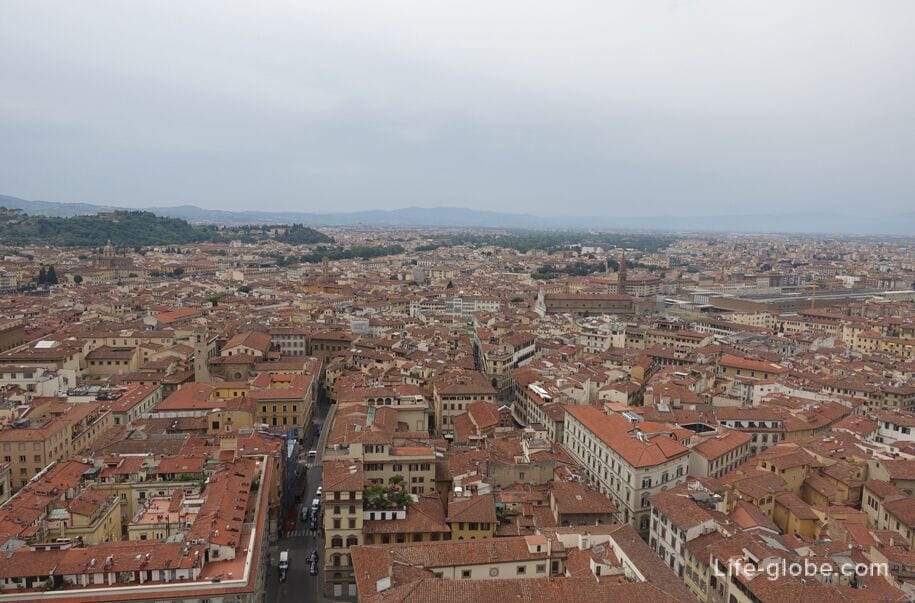
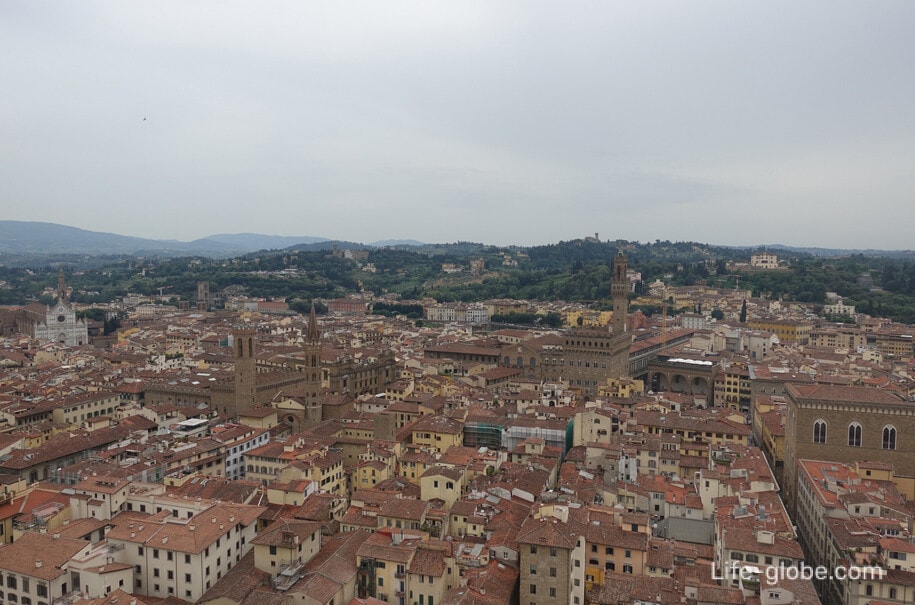
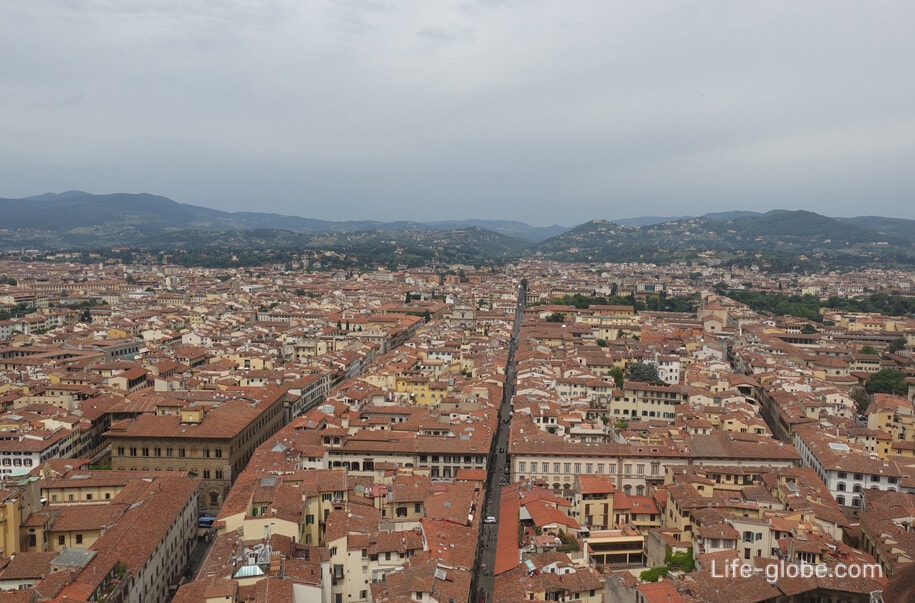
Baptistery of San Giovanni
The Baptistery of San Giovanni or Baptistery of St. John (Battistero di San Giovanni) is a medieval baptistery that has the status of a minor basilica and is one of the oldest churches in the city.
The baptistery was built between 1059 and 1128 in the Florentine Romanesque style on the site of an ancient Roman temple of the IV-V centuries dedicated to Mars, the patron god of old Florence. The consecration of the baptistery took place on November 6, 1059 by Pope Nicholas II in honor of St. John the Baptist.
In addition to the exterior decoration in the exterior of the baptistery, doors attract attention, the most famous of which (eastern) were created in 1425-1452 by Lorenzo Ghiberti and his assistants. Michelangelo called these gates the "Gates of Paradise" because the reliefs of the doors show scenes from the Old Testament.
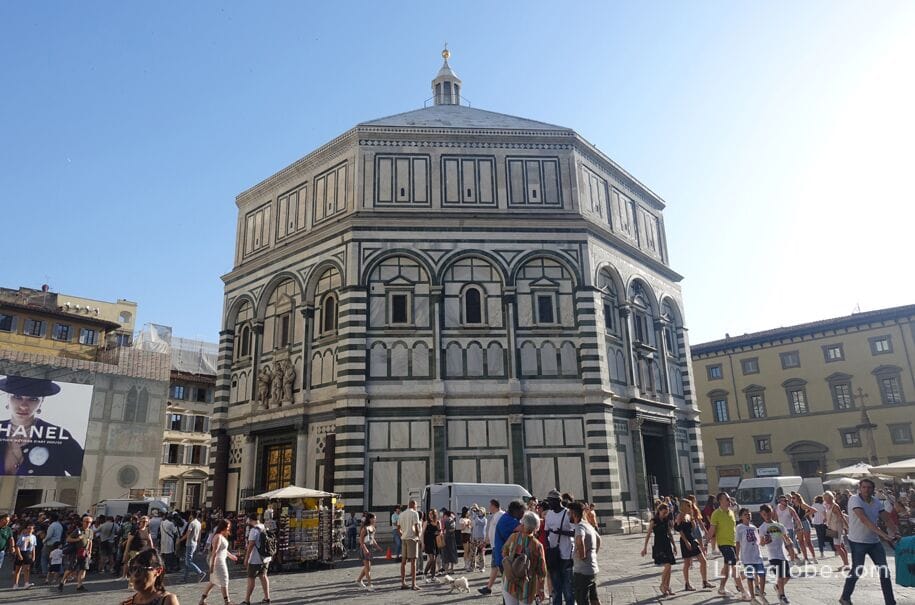
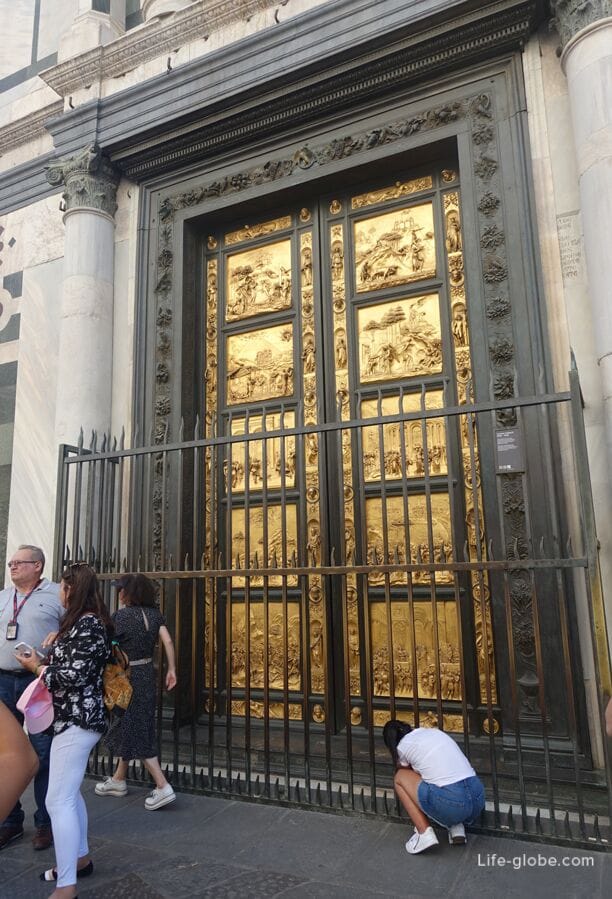
Inside the baptistery, the mosaic of the dome with the figure of Christ the Judge and scenes of the Last Judgment attracts attention.
The monumental bronze-marble tomb of Antipope John XXIII by Donatello and Michelozzo Michelozzi also stands out. More about the Baptistery of San Giovanni…
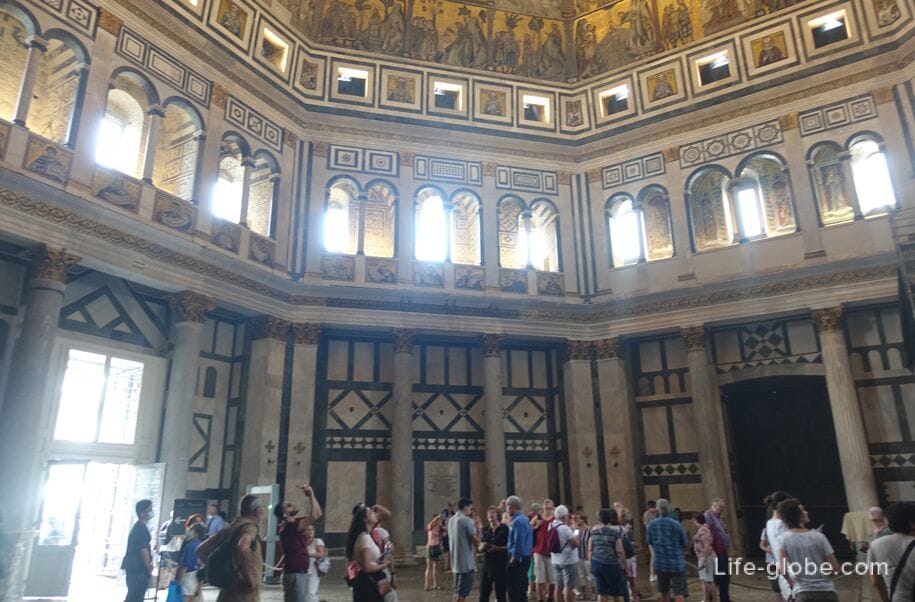
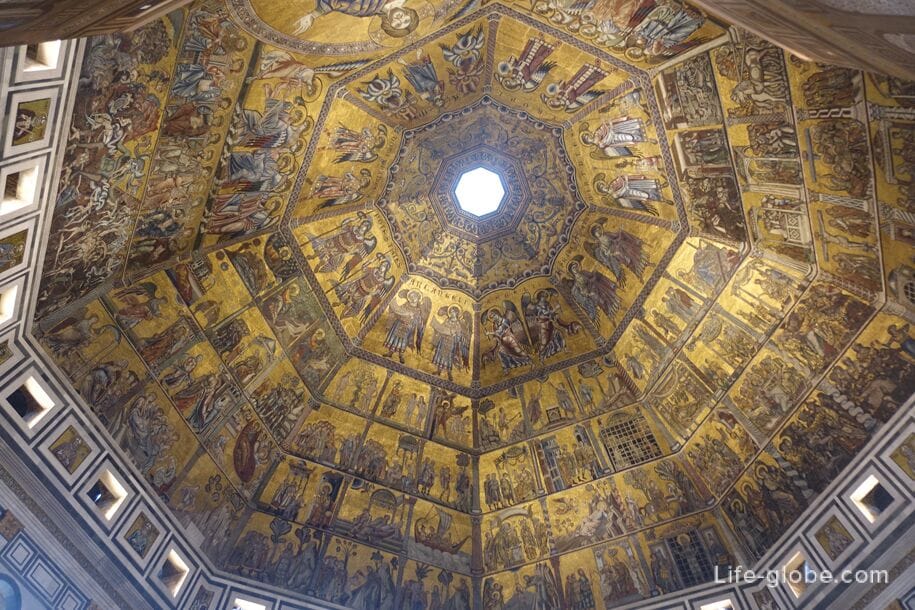
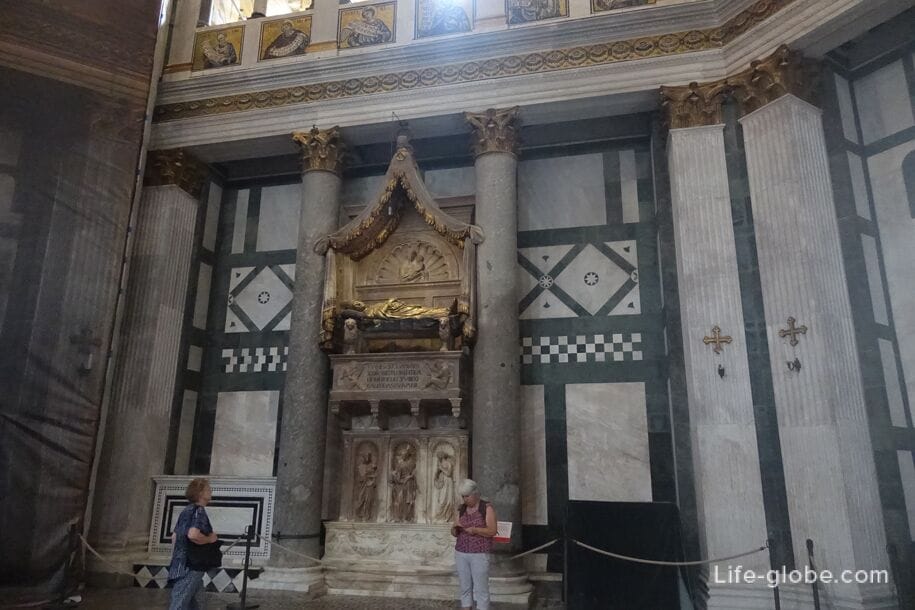
Opera Duomo Museum
The Museo dell'Opera del Duomo is a museum of the cathedral complex of Florence Santa Maria del Fiore, containing many original works of art and masterpieces created for the interiors and exteriors of both the Cathedral (Duomo) and for the bell tower of Giotto and the Baptistery of San Giovanni.
Most of the important works of art of the cathedral, bell tower and baptistery during the history were removed and replaced with copies, and the originals were moved to the Duomo Museum, where they can still be seen today.
Thus, the Opera Duomo Museum houses authentic masterpieces of art that have adorned the monuments of the Duomo complex for more than seven centuries: from the works of Michelangelo, to Donatello, Brunelleschi, Ghiberti, Bandinelli, Sansolino and others.
From the exhibits in the museum: parts of the former decoration, tombstone inscriptions and architectural elements; sculptures, sculptural groups, paintings, bas-reliefs, doors, shrines, crosses, church clothes and utensils; other objects and decorations related to the history of the Florence Cathedral complex, as well as models of the cathedral and the Brunelleschi dome.
The museum is located in a historic building to the east of the cathedral, near its apse, at Piazza del Duomo 9, 50122, Florence. More about the Opera Duomo Museum…
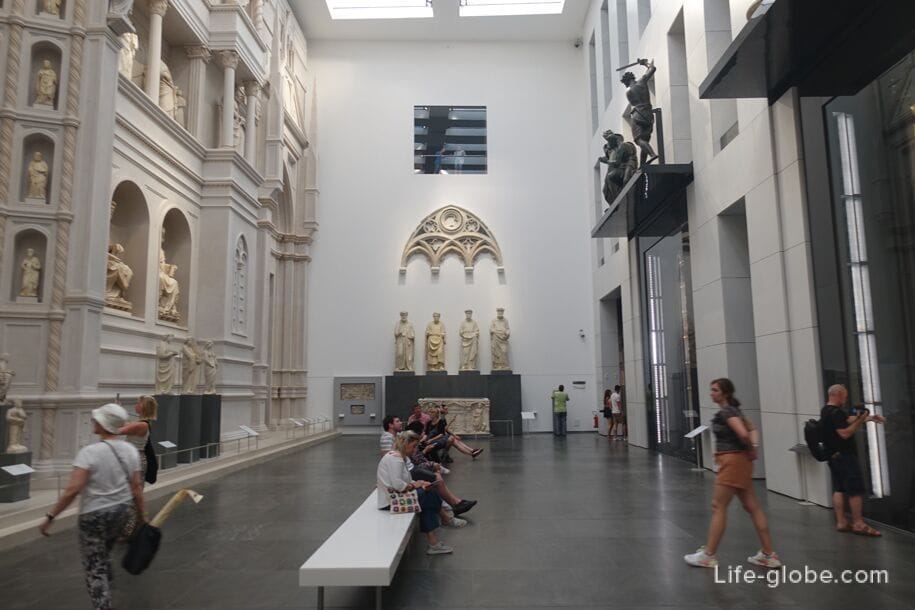
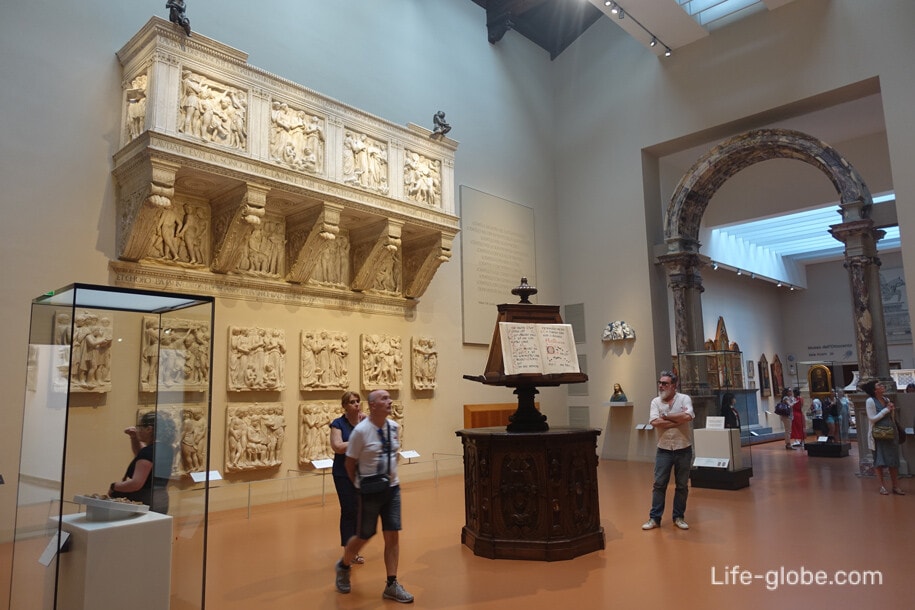

Scheme of the Florentine Duomo complex
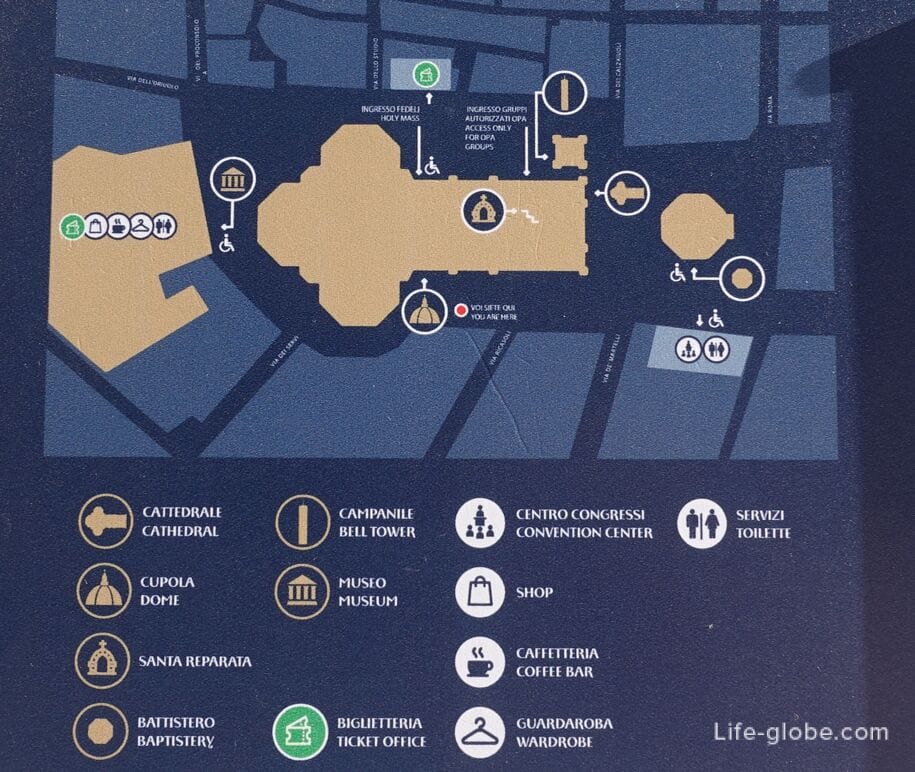
All accommodation facilities in Florence (hotels, apartments, guest houses, etc.), including in the historical center of the city and more remotely from it, can be viewed and booked here




